PART 12
It is a fact that the early Christians in Rome had, not only Roman figures in the church, but that they also had African figures.
For example, there were at least three Black Africans Popes, and one of them who became a saint was Pope St. Miltiades or St. Melchiades. He was born in Africa and died in Rome in January, 314.
Pope Victor, an African by birth, was another one who “had condemned and excommunicated Theodore of Byzantium who had denied the divinity of Jesus Christ. He suffered martyrdom under Servus and was the Church's 14th Pope”.
Pope St. Gelasius was born in Africa and reigned as Pope from 492 to 496. “He was active in rooting out the last vestiges of paganism in Rome”.
So in the early days of the Christian church, it was not unusual to have people in the church that came from Africa who would be high officials in the church, including Popes.
Notice that you are not being shown slaves, which is not to say that there were no slaves in Europe, but what has been left out when the story of African people had been told about their participation in Europe is the fact that they occupied central positions in government, in religion, in art and other things that took place in Europe.
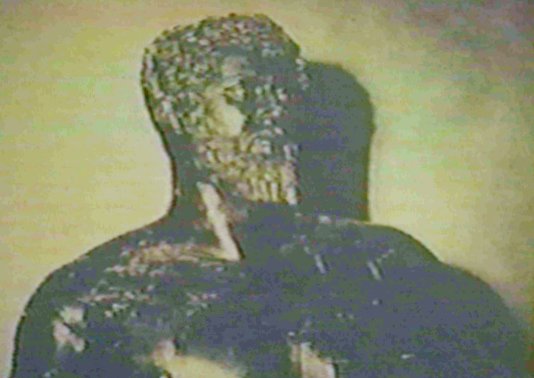 This is Septimius Severus who was one of the emperors of Rome.
There were at least 3 Black emperors of Rome and he was one of them who came from Carthage, Africa. He is one of the emperors that persecuted the Christians.
This is Septimius Severus who was one of the emperors of Rome.
There were at least 3 Black emperors of Rome and he was one of them who came from Carthage, Africa. He is one of the emperors that persecuted the Christians.
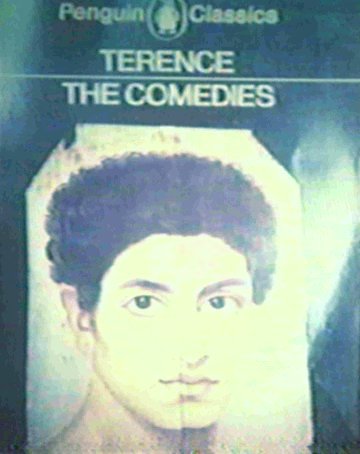 Also from Carthage we had this person who was studied widely in Europe. His name was Terence, but this is not his picture, but one that the publishers put on the book. Some artist made that picture but we don’t have a picture of him from the time he lived. Terence would be one of the writers that Shakespeare must have studied for example, because everyone else during Shakespeare’s time would have studied him. He was considered a classical writer but what is not known is that he came from Africa.
Also from Carthage we had this person who was studied widely in Europe. His name was Terence, but this is not his picture, but one that the publishers put on the book. Some artist made that picture but we don’t have a picture of him from the time he lived. Terence would be one of the writers that Shakespeare must have studied for example, because everyone else during Shakespeare’s time would have studied him. He was considered a classical writer but what is not known is that he came from Africa.
It is interesting that they call him Terence, but with Shakespeare they called him William Shakespeare using the first and last name, but with Terence you get only his first name. Terence’s full name is Terence Publius Afra, or specifically, Terence the African. This shows that the distorting of the African past continues. So even now persons who pick up and read Terence’s literary works would not be aware from that book whether or not this person was African, and would not be aware therefore of the African influence in a profound way on the literature of Europe. But it’s not just Terence, it’s not just one person, in fact there are many other significant figures.
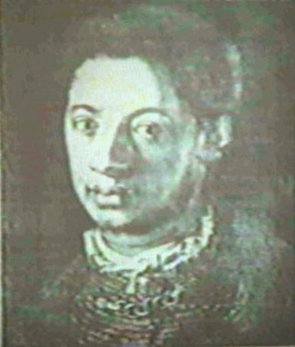 This is Alessandro (Alexander) de Medici sometimes called il Moro.
An African woman and Pope Clement VII got together and had Alessandro de Medici who became the head of the famous De Medici family in Italy and produced a number of daughters that were married off to the kings of Europe. Almost every major king of Europe married one of his daughters.
This is Alessandro (Alexander) de Medici sometimes called il Moro.
An African woman and Pope Clement VII got together and had Alessandro de Medici who became the head of the famous De Medici family in Italy and produced a number of daughters that were married off to the kings of Europe. Almost every major king of Europe married one of his daughters.
So you have many of the royal families in Europe right now who can trace their lineage all the way back to this Afro-European - Alessandro de Medici, who became not only head of the De Medici family but also the Duke of Florence. Now in reading the history of Italy or the history of Europe, very few people come across this name, or if they do, hardly recognize that this is an African or Afro-European.
“Despite the many portraits of this 16th century Italian Renaissance figure, his African heritage is rarely, if ever mentioned. Alessandro wielded great power as the first duke of Florence. He was the patron of some of the leading artists of the era and is one of the two Medici princes whose remains are buried in the famous tomb by Michelangelo. The ethnic make up of this Medici Prince makes him the first Black head of state in the modern western world.”
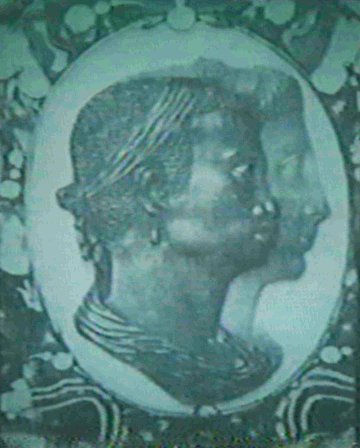
Here is the mother of Alessandro de Medici with the Pope, identified in documents as Simonetta da Collavechio.
When you look at African history in its totality, might it not be the other way around in relation to European history, that is, in terms of the recognition that it gets?
From what you have been seeing so far, one thing ought to be abundantly clear, and that is you could not write European history and leave out African history. If Africans are left out of Europe’s story, then Europe’s story is incoherent and you will have a tree without a trunk, without leaves or anything else for that matter.
So there is an integral connection between Africa and the rest of the world, and in reality, to write history you have to write world history of which African history must be a major part. So it is intellectually dishonest and intellectually incompetent to write world or European history without attention to co-events in Africa, and also its antecedents.
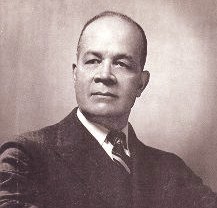 Joel Rogers was an African-American historian who came from Jamaica in the West Indies. He was one of those free minds who had no degree which was probably the best thing that could have happened to him, because no one could train out of him, his critical faculties.
He was the one who discovered this tremendous amount of material that enabled him to become one of great historians of America, being recognized as such in Europe, but not in America.
Joel Rogers was an African-American historian who came from Jamaica in the West Indies. He was one of those free minds who had no degree which was probably the best thing that could have happened to him, because no one could train out of him, his critical faculties.
He was the one who discovered this tremendous amount of material that enabled him to become one of great historians of America, being recognized as such in Europe, but not in America.
Many of his books were self-published, but one of them was published by a major publisher which was titled “The World’s Great men of Color”. But one of the kinds of things that he enjoyed most was travelling. He was a Pullman porter and he took all his money with no grants from The National Endowment for Humanities and National Science Foundation and went to the libraries of America, the library of Congress, to Europe, to Paris, to London, in fact, all over the world in libraries looking for the history of Black people. By the way, Joel Rogers found 500 of these images before he stopped, because he just got tired of counting as there were so many of them.
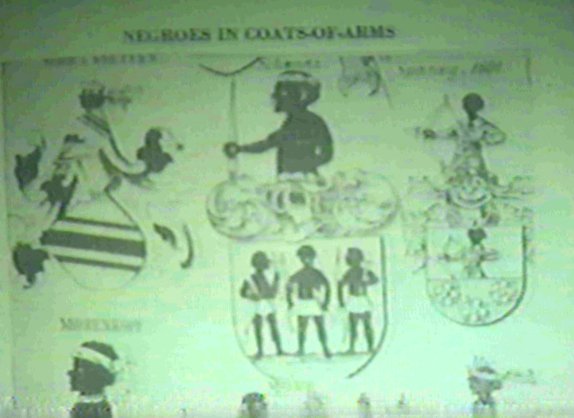 These are some of the images that he got out of books in Europe. If you are in the royal family in Europe, you register your family crest. There are certain books that keep records of family crests, so he kept going through these family registries and finding these Black images.
These are some of the images that he got out of books in Europe. If you are in the royal family in Europe, you register your family crest. There are certain books that keep records of family crests, so he kept going through these family registries and finding these Black images.
He said, “every time I find Black images, it looks as if they are almost associated with the name Moor or the name Black in some way.”
This image shows the Negroes in Coats of Arms. Look at the one at the top in the centre and note that he is Black with full lips emphasized by the way he is drawn, but also notice that his name is Schwartz, which comes from Germany where it is registered. Now the name Schwartz in German means Black, so he is Black and his name is Black.
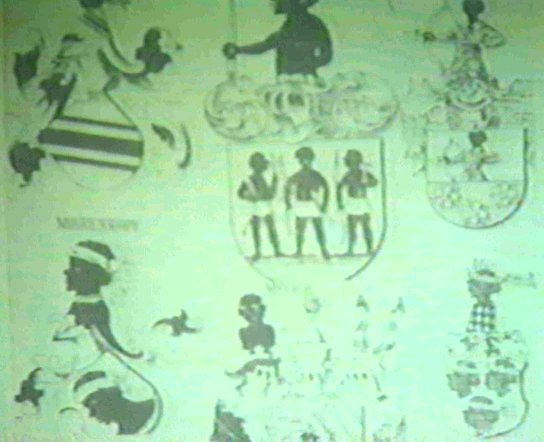
Look at the man in the lower left corner, his name in German is Moorcroft (also Marcroft or Morecrofte). In German the word Moor means just that, and the word Croft means head, so this means the head of the Moor.
Note the one in the centre, Mohr, which is nothing more than another rendition of the word Moor. So here is a good example of the fact that the Moors left their impressions in Germany, but it’s not just in Germany alone.
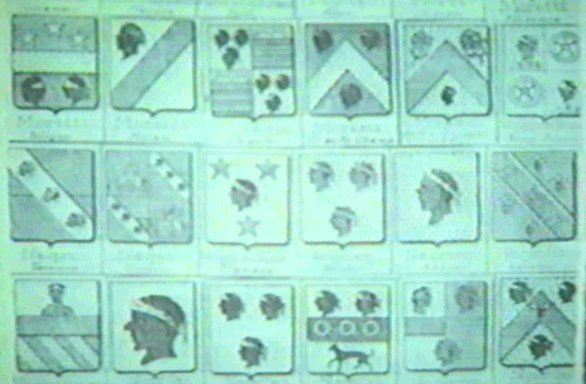 Here, if you look at the centre line, note a whole group of family crests with Black faces on them, and underneath is Negri / Negre, Negrier, and on the line near the bottom you will see Lenoir which in French means the Black and in Italian there would be heads like these with names like Mora. Back to that word Moor; in English there would be family crests that are registered such as Morrison which means son of the Moor; Moorhead, like Agnes Moorhead, which means Agnes, head of the Moor.
Here, if you look at the centre line, note a whole group of family crests with Black faces on them, and underneath is Negri / Negre, Negrier, and on the line near the bottom you will see Lenoir which in French means the Black and in Italian there would be heads like these with names like Mora. Back to that word Moor; in English there would be family crests that are registered such as Morrison which means son of the Moor; Moorhead, like Agnes Moorhead, which means Agnes, head of the Moor.
In other words, The Moors were a phenomenal, major presence in southern European societies spilling over into northern Europe, even up into Ireland and up the coast to England, leaving behind evidence of the fact that they were there, and certainly not as slave populations. There were there in noble families, and the record is found in one place. One of the things that allows you to see this record is the material that Joel Rogers selects, which comes from his book, “Nature Knows no Color Lines”.
By the way, if those isolated heads had not been picked out and pulled together and you saw only one, you might not have known what it meant, but by putting them all together you begin to see the pattern of Black faces and the name Moor, which enabled Joel Rogers to draw the further connection about the role that Moors played in European civilization.
When you look at that information, the question of how white is white, how European is European comes up.
People will look at an African-American population and both the African-American and the Europeans will talk about how mixed the African-American population is. That you had Africans that came over and got mixed up during slavery times with the owners and so forth, or that there has been miscegenation since that time. So that many of the people that you see have lost melanin or their colour over a period of time and have become a mixed population without recognizing at the same time that both the white and Black population that went into America went there already mixed. In other words, there was mixing long before slavery as well as during slavery, and there was also mixing in Europe. In other words, the Africans began to mix with Europeans even after Grimaldi.
You can find in the historical times, references to Africans who left Africa on ships and went up to Ireland and Scotland. They were called Fomorians and had settled in Ireland and Scotland. “The Fomorians, it is recorded, were seafarers from Africa who were descendents from Noah's son Ham. In Irish mythology, the Fomorians (Irish Fomóiri, Fomóraig) or Fomors were a semi-divine race who inhabited Ireland in ancient times and may have once been the beings that preceded the gods, similar to the Greek Titans.”
Of particular interest is a dance in Ireland, Scotland and England which they perform even now, which is called The Moorish Dance (The Maurice Dance). It has become the National Dance of England, where people paint their faces Black to perform these dances which originated during the Moorish times.
Most people are fascinated by the way Black people dance, and that goes all the way back to the Egyptian times. They used to send all the way to the south to get pigmies to come to Egypt and dance because pigmies were thought to be able to dance in a holy fashion that was more pleasing to God than anybody else’s dance. Therefore, we carry that long legacy in the dance tradition.
What I am trying to say is that there was an untold story of this movement into Europe by African populations especially across the straits of Gibraltar into Spain and Portugal, and then further up into Europe as well. There was an infusion of the culture as well as a biological infusion, since Africans were mixing with these people.
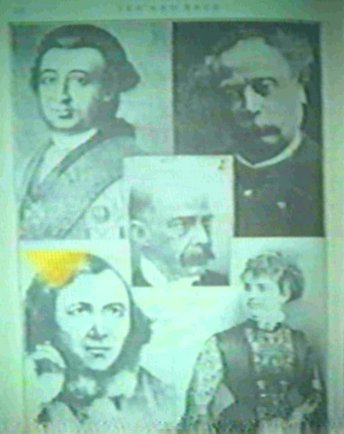 Here is an example of this type of mixture in Europe. Robert Browning who is the Greek poet of England is pictured in the lower left. He is an African-European since he comes from African-European parentage.
Here is an example of this type of mixture in Europe. Robert Browning who is the Greek poet of England is pictured in the lower left. He is an African-European since he comes from African-European parentage.
Alexandre Dumas who is in the upper right and who wrote “The Three Musketeers” and "The Count of Monte Cristo” is African-European.
Sidonie-Gabrielle Colette the great French author is African-European, though she looks completely white. (She is not shown in the picture here).
 Beethoven on the left is an African-European. This one stuns all the musicians, especially the classical type to hear that their idol Beethoven had Black blood.
Beethoven on the left is an African-European. This one stuns all the musicians, especially the classical type to hear that their idol Beethoven had Black blood.
This comes from Joel Rogers book “Sex and Race Vol. III”. You see Beethoven on the left and Walter White from the NAACP on the right who is even lighter than Beethoven because of the way he was painted. But the way Rogers came to his conclusion was that he got all the biographies of Beethoven that were written by people who knew him, as well as the physical descriptions from eyewitnesses of what Beethoven was like. He was called frizzy haired and in some cases he was even called Nigger and The Black Spaniard. Beethoven was clearly an African-European. This is researched and reported on in the appendix of “Sex and Race Vol. III”. By the way, so was Mozart and Handel his teacher, that is, African-European, mixed with African.
This is Alexander Pushkin (1799-1837), who is recognized today as the greatest poet of Poland and Russia. What most people do not know about Pushkin is that his grandfather was brought to Russia by the Czar of Russia from Africa, who was an African that he liked. He then became an important part of the whole Russian hierarchy; his grandfather became a general in the Russian army.
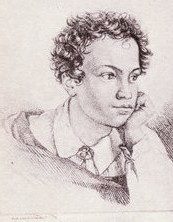
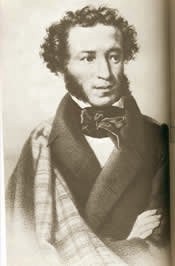
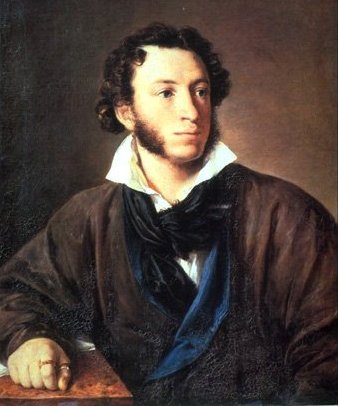
Pushkin then grew up with the support of a middle-upper class family and became a writer. Pushkin was the one who taught the Russians to write in Russian because until that time, anyone who was a literary person in Russia felt that they had to write in French or German, because the Russian language was not thought to be suitable for advanced literary work. Pushkin showed the beauty of the Russian language to the Russians themselves, although he was also Russian.
There are great stories about him in duels.
Now, Pushkin was so proud of being African, that he wrote a book to his grandfather which was called “The Negro of Peter the Great of Russia”. So Peter the Great of Russia was the Czar who brought Pushkin’s grandfather to Russia, and Pushkin remembered this and loved his grandfather who was a special figure in Russia so much, that he dedicated a book to him. His grandfather was known as The Negro of Peter the Great.
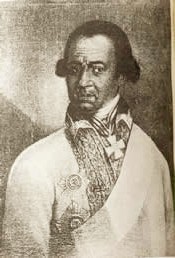
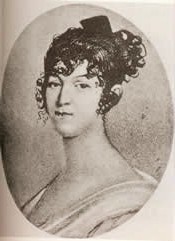

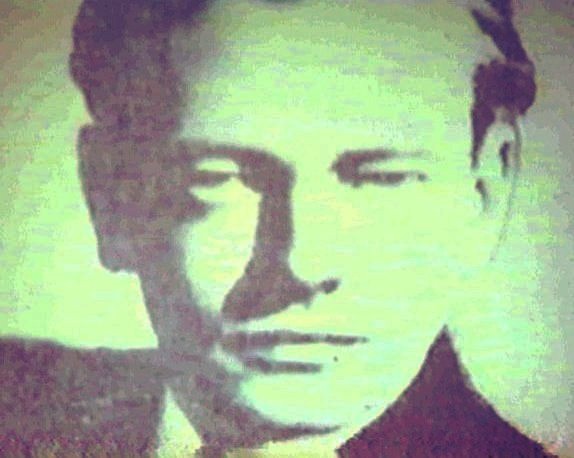 Pushkin’s grandfather
Pushkin’s mother
Pushkin’s daughter/grand
Pushkin’s grandson
Pushkin’s grandfather
Pushkin’s mother
Pushkin’s daughter/grand
Pushkin’s grandson
This is Pushkin’s daughter or granddaughter. Putting it in line with the mixing question, here you can see the effects of mixing, in other words, Pushkin had been mixed; now his daughter is mixed. Now look at the grandson of Pushkin. So what happened to the genes? They began to disappear into the European population.
Now how many Europeans walking around today are aware of the fact that they are mixed with African genes. Therefore, when we talk about the mixture that occurred in the United States of America, it’s a mixture of mixtures.
But to talk about mixture really is somewhat ridiculous in view of the fact that it all came from the African source.
It comes from the African in the first place, so Africans are mixing with Africans who changed through other environments over time.
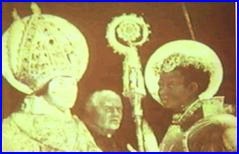 This is the patron saint of Germany whose name is St. Maurice or Mautritus. The name Maurice or Mautritus comes from the word Moor or Mauritania. So clearly no one had any problem with an African saint.
This is the patron saint of Germany whose name is St. Maurice or Mautritus. The name Maurice or Mautritus comes from the word Moor or Mauritania. So clearly no one had any problem with an African saint.
“Coins and Coats of Arms for many districts and cities in Germany were made in his honour. He is still worshipped in Poland, Romania, Switzerland, Austria, Greece, Italy, Czechoslovakia, Hungary, Britain, Germany & the former states of Yugoslavia, where his iconography decorates churches and shrines”.
 Later, Europeans began to get interested in African creativity, and here is just a quick example of how artists were influenced, and you could also imagine how musicians would have been influenced. This is Picasso, look at the Ashanti Doll on the left and then look at this painting by Picasso which is a copy of the Ashanti Doll.
Later, Europeans began to get interested in African creativity, and here is just a quick example of how artists were influenced, and you could also imagine how musicians would have been influenced. This is Picasso, look at the Ashanti Doll on the left and then look at this painting by Picasso which is a copy of the Ashanti Doll.
The Smithsonian Institution in Washington DC has a whole set of slides on the comparison of African art which Europeans copied. So there are several slides of long connection that show time and time again how the major European artists would go for their inspiration to Africa and then would re-present this material in their own modified form to European audiences.
Africa’s western Diaspora-Africa.
The western Diaspora in Europe was touched on, now we will focus on moving out of the Nile Valley across the continent of Africa, a feat they did many times, but what is important about that, are these points which also help to explain how Africa lost its pre-eminent position.Africans give up the coast; that’s one of the major points, where any group of people who give up their coast land and moves to the interior even though it’s for protection, eventually will lose the benefits of trade and access to the rest of the world.
African nations and empires develop in the interior, that is, Ghana, Mali, Songhai and Zimbabwe are nations that developed in the interior after that period of time during which Africans deserted Egypt and had been migrating out to the west. Many of these migrants were people who had come, according to the oral history and in some cases written history of these Africans, from Nile Valley locations, somewhere along that Nile River.
Europe goes to war at the source. Here are the three things that Europeans have done that have helped to destabilize and to destroy things that were going on in Africa.
- First Colonization, that is to say, the splitting up of the continent of Africa among European powers that settled in Africa and took control.
- Slavery, meaning the depopulation of the African continent which, according to some writers, was to the tune of about 200,000,000 (200 million) people. In other words, what we see in Africa now is nothing but the remnants of vast populations and national states that existed before the colonial period. So there was genocide on the African population and the destruction of the African infrastructure from which we have been trying to recover in the African continent since that time of slavery and colonization.
- Finally, Neo-colonization, something that is in existence in 1986. This means controlling Africa not by the physical presence of the outside powers, but by manipulation through money, force of arms, that is, by controlling the structure from the outside. These would be the kinds of things that should be noted about Africa’s Western Diaspora.

 |
 |
 |
 |


